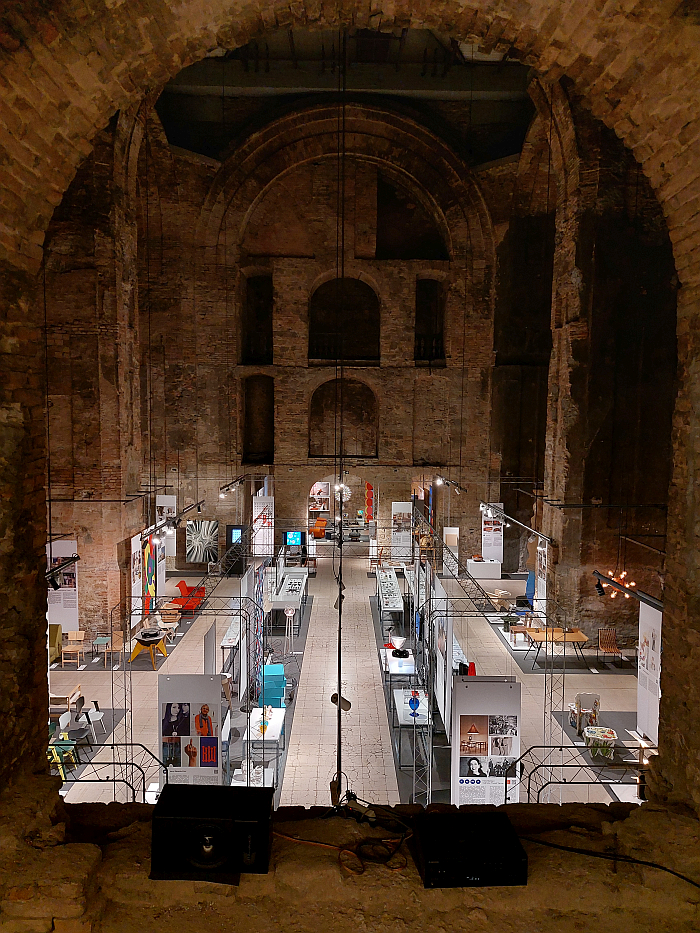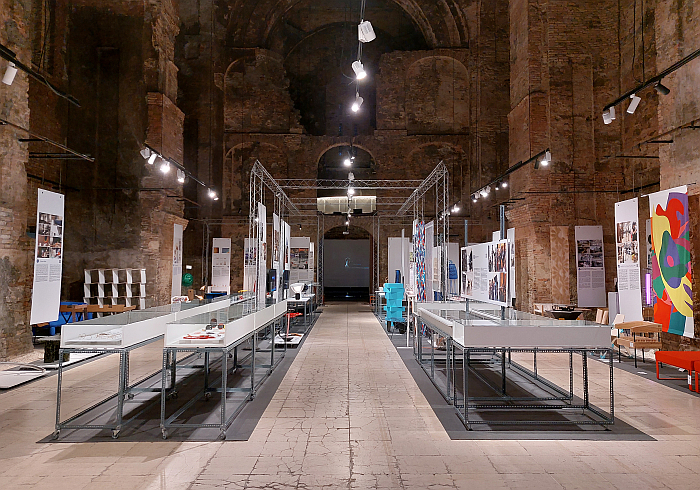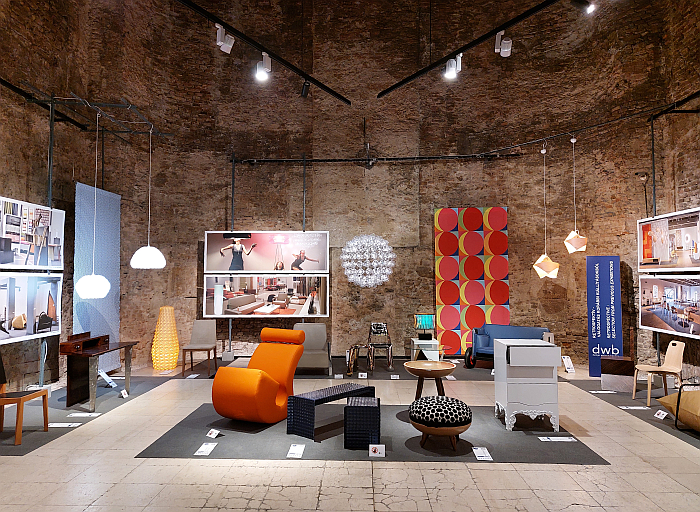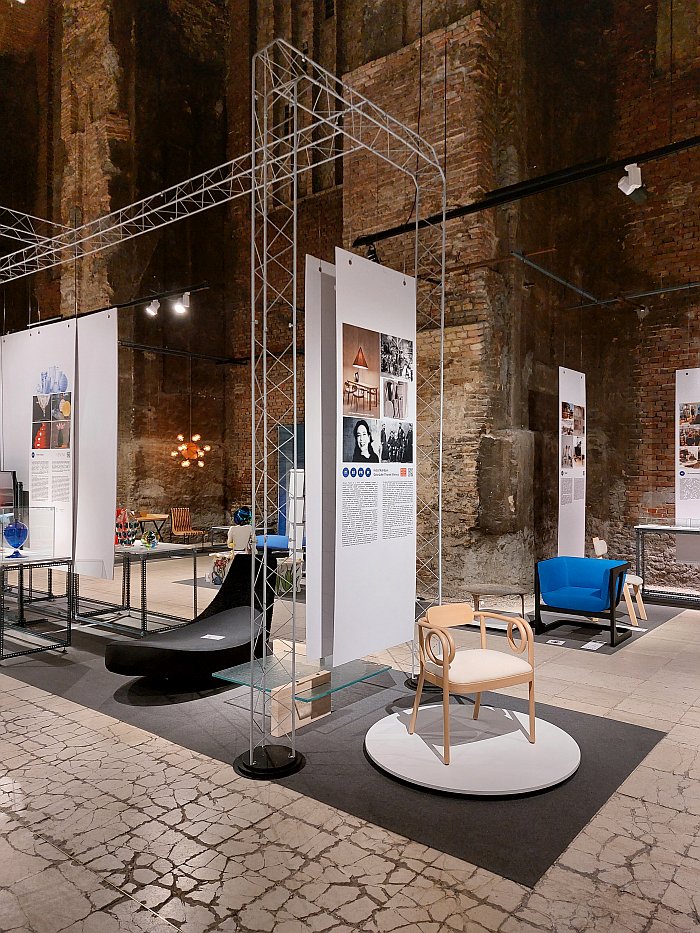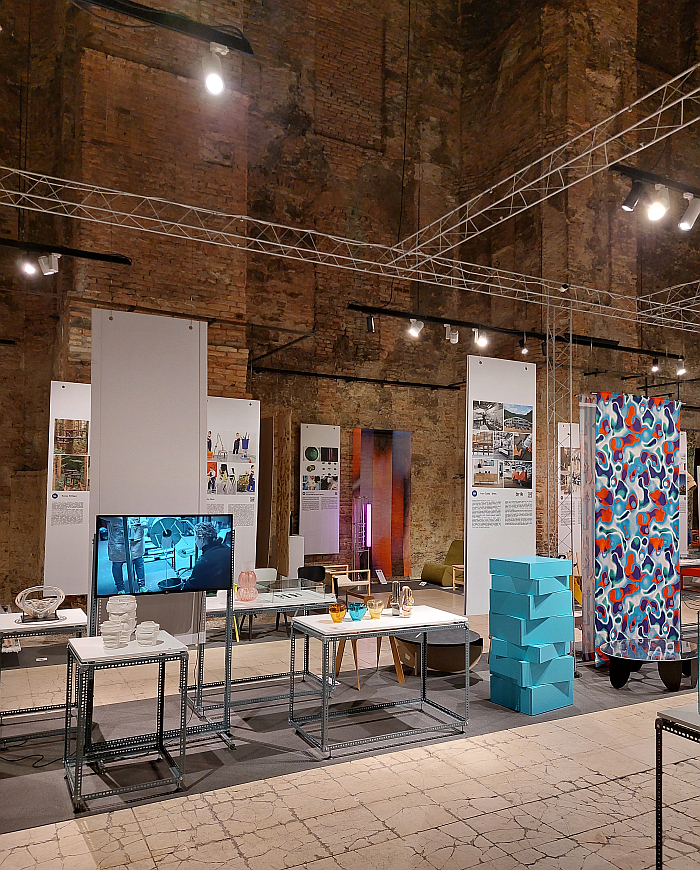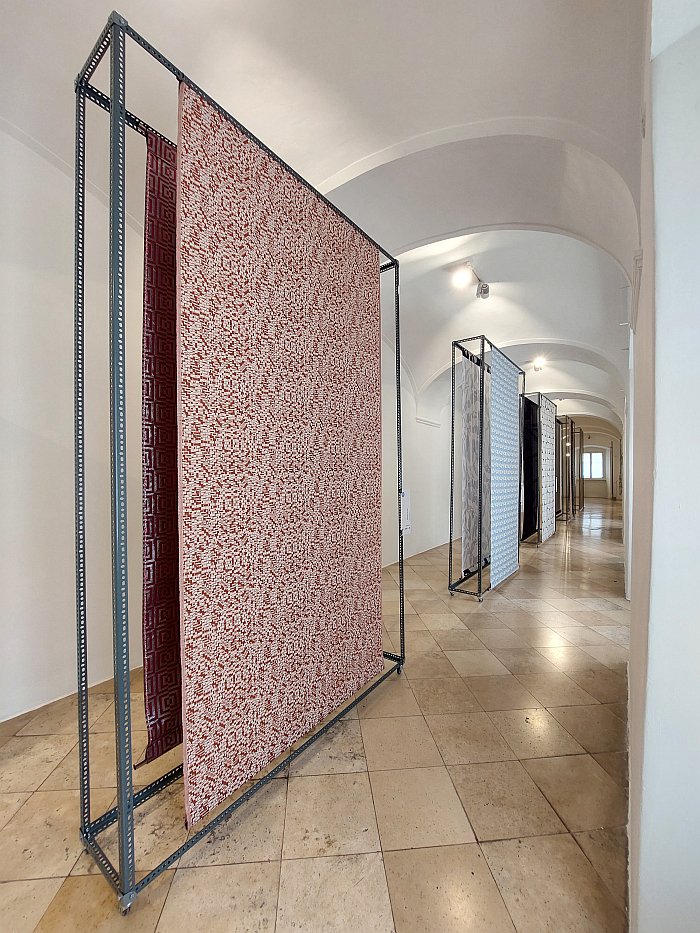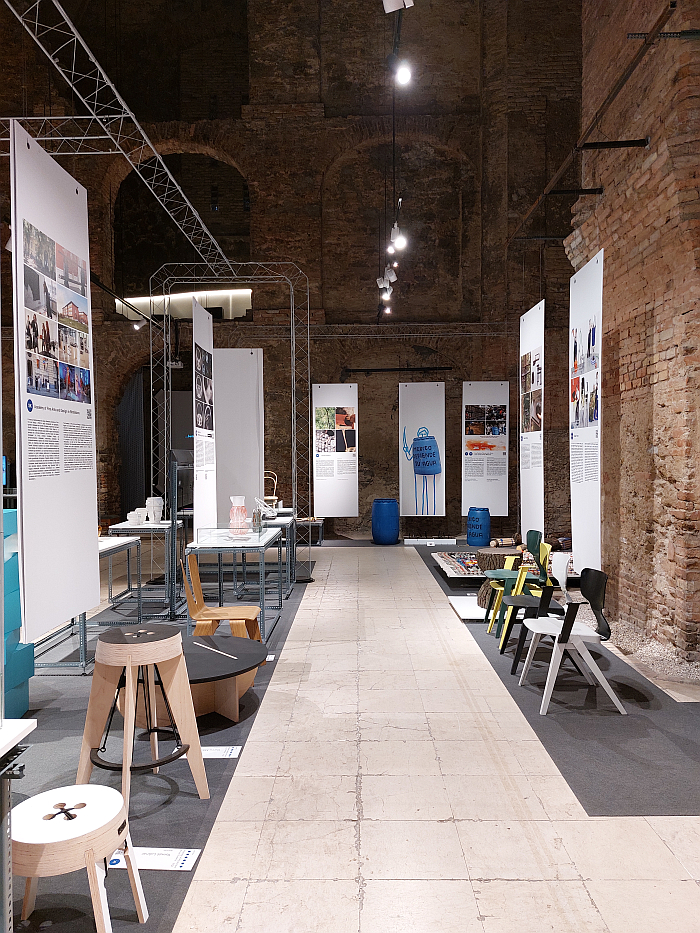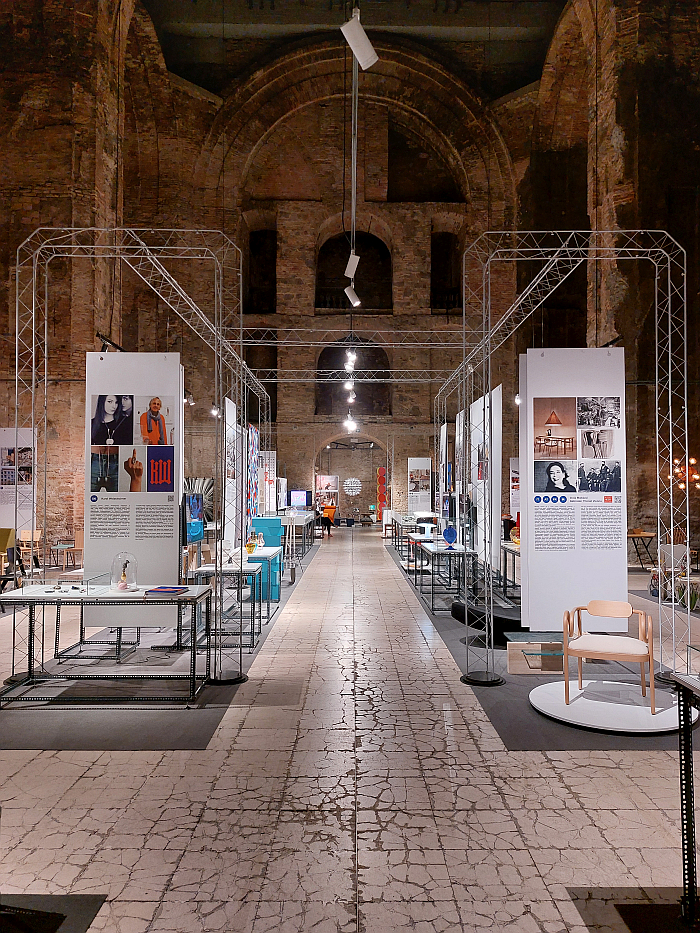Celebrating its 20th anniversary edition in 2024 we charted, and discussed, the (hi)story of Design Without Borders in our conversation with the institutions initiators, organisers and curators Szilvia Szigeti and Tamás Radnóti, and so refer you there dear readers for the background. And also refer you to our post from the 2014 edition, the last time we visited Design Without Borders in its native Budapest; a last visit in Budapest not for lack on interest, far from it, but simply on account of pressures of time.
In 2024 we did however manage to make it timeously to the Hungarian capital, and up the hill to the Kiscell Museum, Design Without Borders' home since 2020, and over the coming days and weeks we will bring you some of our thoughts and reflections on some of those works and projects and positions experienced.
Here we will quickly note...
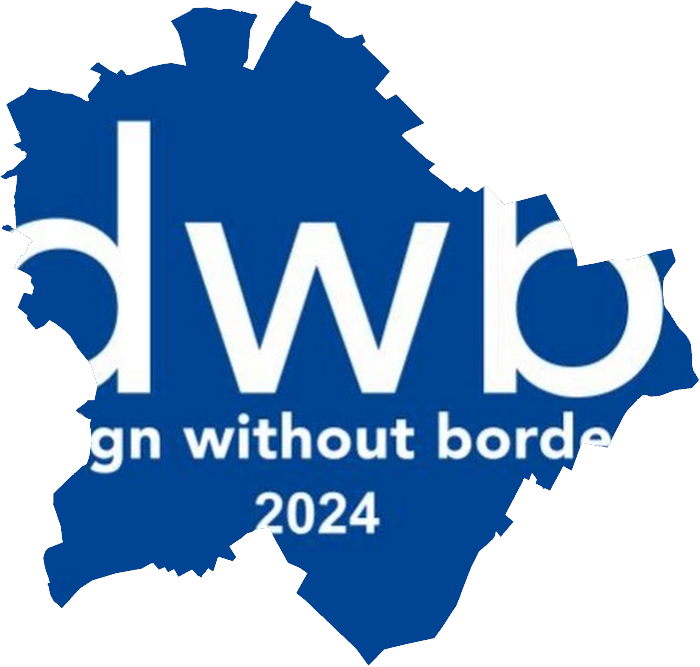
...and as previously intimated, aside from the usual presentation of works by international designers invited by Szilvia and Tamás, and works by students of international design schools that have become a regular feature, Design Without Borders 2024 opens, if one so will, with a brief retrospective of the past 20 years, including textile designs by Szilvia and a desk by Tamás, the latter a work originally shown at the 1996 exhibition BútoroSOKK – FurnitureSHOCK – at the Budapest Museum of Applied Arts, an exhibition curated by Tamás and which judging by the photo on display in the Kiscell Museum must have been a real SOKK in in late 1990s Budapest, and ends with a retrospective of the last decade of Texhibition, or at least ends with a large part of the Texhibition retrospective, elements are woven, pun very much intended, throughout the main display; a Texhibition platform organised by Szilvia which pairs textile designers with Hungarian textile manufacturers to realise a project with the overall aim of supporting and promoting textile design and the textile design industry in Hungary.
Sandwiched, if one so will, between the two retrospectives one finds not only the main Design Without Borders 2024 exhibition but also a presentation of projects from Spot On MozART, an interdisciplinary project undertaken between 2020 and 2023 by the Mozarteum, Salzburg, a presentation including results from a weaving project which links immaterial sound with tangible goods, a nice reminder that aesthetics isn't just a visual concept; and which leads into a brief presentation of the (hi)story of the complex that houses the contemporary Kiscell Museum exploring not only the links between Kiscell and Mariazell, Austria, links that go back to the establishing of the Kiscell complex, the original name for Kiscell being Kismáriacell, Little Mariazell, because that's exactly what it was built as, a small-scale copy of the church at Mariazell, but also discussing the life and work of the interior designer and furniture manufacturer Miska Schmidt who called the Kiscell complex home from 1910 until his death in 1935, when, following Schmidt's bequeathing of the complex to the city, it became a museum of local (hi)story.
A presentation of the (hi)story of the Kiscell complex that, more or less, ends with a 1930s display vitrine from the, then, new museum. A vitrine that finds a formal echo in the 1996 desk by Tamás met at the start of Design Without Borders 2024. Albeit an echo with a different origin: the vitrine tapering towards its rear edge as it had to fit in the window space, and they taper towards the window; Tamás's desk tapering because it is a reflection on desks, on the use of desks and a response to that way we all tend to use not the whole desk surface just an arc around us, and so don't need the whole desk surface. So why provide the whole? A comparison that is a very nice reminder that in design a form is rarely a form and invariably is an expression of a position or a response to a questioning or a solution to a challenge. And a reminder that similar objects can and do arise in different epochs and from different approaches and from different positions, because a designer never works towards a form but towards a solution, an expression, an argument, a response, an object.
Reminders regularly repeated throughout Design Without Borders 2024, and that in a presentation which in its crossing borders, its ignoring borders, of genre, position, epoch, approach etc, allows for a questioning of what is 'design' if we don't create borders between different creative practices? How does one define 'design' if there are no borders? How does one define 'Europe' if there are no borders? How does one define 'the world' if there are no borders? How do borders restrict and harm 'design'? Questions that couldn't be more relevant for design, or for the society that depends on the ongoing development of design and from which design develops.
For all in or near Budapest Design Without Borders 2024 can be viewed at the Kiscell Museum, Kiscelli utca 108, 1037 Budapest until Sunday June 23rd.
For all in on near Bratislava an abridged presentation can be viewed at Galéria Umelka, Dostojevského rad 4533/2, 811 09 Bratislava from Saturday July 13th until Saturday August 10th. A version that for all it is abridged we see no reason to doubt will be any less informative, interesting or entertaining than that on show in Budapest.
And for all, more details on Design Without Borders and the 2024 edition can be found at https://design-without-borders.eu
